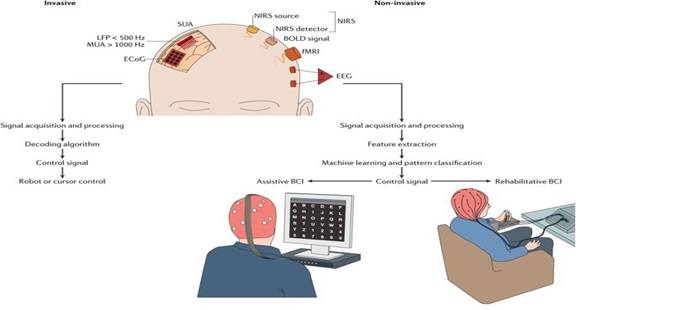[This piece has been authored by Anushruti Shah, a fourth-year law student at the Hidayatullah National Law University, Raipur]
Introduction
It is relatively unknown, but brain implants and other neural devices have been effectively utilized for quite a long time to treat neurological and brain injuries. Such devices claim of enhancing the quality of our life and eventually expanding the utility of our brains. For instance, last year Neuralink Corporation, the American neurotechnology company founded by Elon Musk, unveiled its animal trial in a video featuring a pig called Gertrude with a computer chip inside its brain, to demonstrate the company’s plans to create a brain-to-machine interface. The company aims to build an interface that would connect the human brains with machines, and recently it released a video of a primate, who had been implanted with its technology, playing the game “Pong” with its thoughts. Futurists and AI Experts visualize a future where synthetic brains will, in the coming future, expand the functionality of our brain where it could surpass the power of an organic human brain.
Simultaneously, humans seem to have no boundaries when it comes to finding multiplicity of ways to attack new devices. Such people have already hacked into mobile phones, online websites, social media platforms, ATMs, and many such places. If such brain implants accomplish their claims, their usage will expand in the future. When this happens, a wide variety of legal, safety, and policy concerns would arise. This article talks about such brain implants and delves into their technological intricacies in order to ascertain the nature of the data collected, stored and processed by them to find out why such data requires protection in the future, while also discussing the data privacy issues that will emerge from it.
What is a Brain Implant?
Brain implants which are often stated as neural implants are devices that are directly connected to a biological subject’s brain. The common purpose of brain implants and the focus of recent research is on establishing artificial areas in the brain parts that have become dysfunctional. This involves sensory replacement, e.g., vision. Some brain implants involve creating interfaces between neural systems and computer chips. This work is part of a wider research field called brain-computer interfaces. These Brain-Computer Interface (BCI) or Brain-Machine Interface (BMI) devices have been under research and development for a very long time, where some devices have already arrived in the market.
The possibilities offered by brain-computer interfaces are almost infinite: gaming, motor control, health, and transportation, among others. This is why a large number of companies have detected this niche and are on board. From large companies such as Nissan with its brain-to-vehicle technology, Facebook with its “mental keyboard”, Microsoft with its new patents, and new startups with millionaire funding such as Neuralink by Elon Musk and Kernel by Bryan Johnson. Numerous research projects are in progress to develop such technologies and Neuro-prosthetic devices. In the forthcoming years, it is quite evident that we will continue to develop, sell, and use such devices. Nonetheless, over the coming decades, such devices exhibit the potential to dramatically enhance the functioning of the brain and eventually transforming the Neuro-medical sector.
General Overview of Types of BCI
The types of BCI can be widely differentiated by the degree of invasiveness to individual body and in the method used to measure brain activity. In particular, these differences are of special interest because the information (data) extracted and stored by this technology broadly diverge from each other in term of quantity and quality of data. A distinction is usually made between invasive and non-invasive BCI (Refer to Point 4).

Image source: Chaudhary, U., Birbaumer, N. & Ramos-Murguialday, A. Brain–computer interfaces for communication and rehabilitation. Nat Rev Neurol 12, 513–525 (2016).

